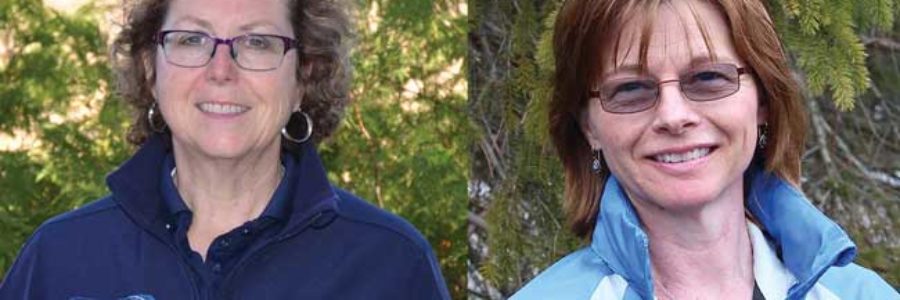New supervisors named for drinking water source protection program in Ausable Bayfield Maitland Valley Source Protection Region (SPR)
The Ausable Bayfield Maitland Valley Drinking Water Source Protection Region has named new supervisors for the program in this region. Mary Lynn MacDonald and Donna Clarkson have worked for the program for a number of years and they will jointly oversee the local program as Program Co-Supervisors. They are replacing Geoffrey Cade, who has recently been promoted to Water and Planning Manager, with Ausable Bayfield Conservation Authority. The new program supervisors bring knowledge of: the local area; best practices for industrial, institutional, agricultural, and residential properties; and the drinking water source protection program through Ontario’s Clean Water Act, 2006.
MacDonald joined the source protection program in this region in 2007 and facilitated a successful learning program for multi-stakeholder community working groups before assuming other source protection responsibilities – most recently in her capacity as a municipal risk management official for the program. Clarkson, who also serves as a municipal risk management official, joined the program as source protection technician in 2010, initially focusing on drinking water stewardship projects in the region before concentrating on source protection plan implementation.
“We are fortunate to have people within our program who can take over this important role with a seamless transition and can hit the ground running,” said Matt Pearson, Chairman of the Ausable Bayfield Maitland Valley Source Protection Committee. “Mary Lynn and Donna have been a great team for almost a decade and they have much experience at building relationships with municipalities, the source protection committee, and landowners, working collaboratively to find practical ways to reduce risk to drinking water sources.” He said they have “the project management skills and local knowledge to achieve success, in addition to the scientific, technical, and program knowledge they bring – which benefits this region greatly.”
The Program Co-Supervisors say they look forward to continuing the legacy of local protection of drinking water sources and carrying on in the position previously held by Geoff Cade; Jenna Allain; and Cathie Brown. They are looking forward to working even more closely with municipalities, the source protection committee, and landowners and other people living and working in areas close to municipal wells.
Both Clarkson and MacDonald are University of Guelph graduates who grew up on farms (MacDonald still actively farms), live in our rural communities, and are active community members. Their wealth of experience in other fields as well as previous work with municipal and provincial programs gives them a broad knowledge base on which to draw. Being connected in the community keeps them in touch with local changes happening in wellhead protection areas, according to the committee.
The Ausable Bayfield Maitland Valley Drinking Water Source Protection Committee is a 15-member committee in addition to the Chair. The committee was Ontario’s first SPC. The members have worked with the public since 2007 to create local terms of reference, assessment reports, and source protection plans. This work is made possible by the Ontario Clean Water Act, 2006. The Province of Ontario approved the locally developed source protection plans on January 19, 2015. The plans took effect on April 1, 2015. Plan policies address 21 activities (such as fuel or chemical storage; among others) that can pose a significant threat to municipal drinking water sources in certain circumstances (for example, in certain quantities and in the most vulnerable locations such as municipal wellhead protection areas).
There are four types of vulnerable areas. They are wellhead protection areas (zones of protection around municipal wells, to protect groundwater); surface water intake protection zones (in this region, around Lake Huron intakes); significant groundwater recharge areas; and highly vulnerable aquifers. Activities in vulnerable areas are assessed as low, moderate or significant threats to municipal drinking water sources. In this region, significant threats to drinking water are only found in wellhead protection area zones A, B, and C. Plan policies in those relatively small areas reduce risk by using tools ranging from education and outreach, to risk management plans, to restricted land uses, or prohibition of some activities in some cases.
To find out about wellhead protection areas, assessment reports, and source protection plans, visit sourcewaterinfo.on.ca.




